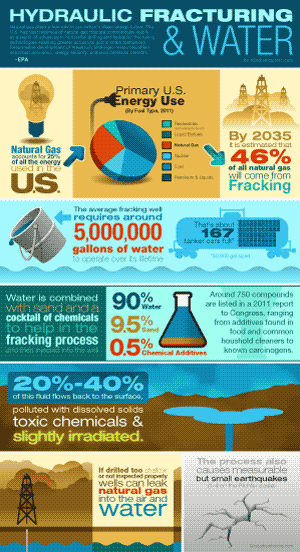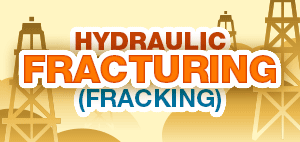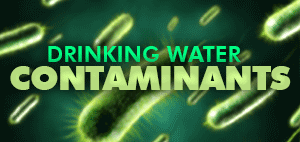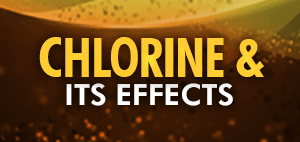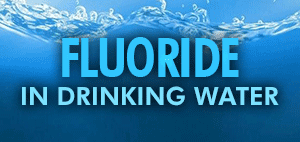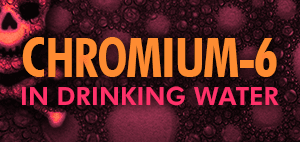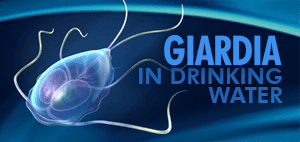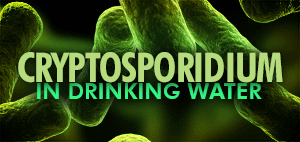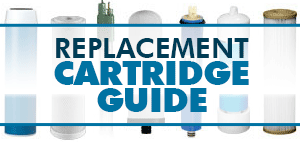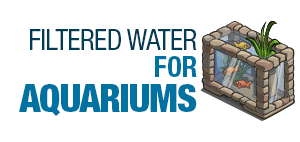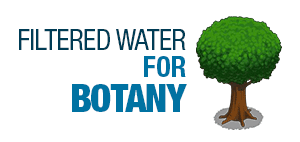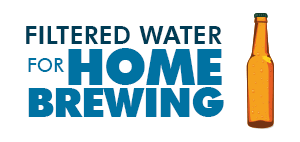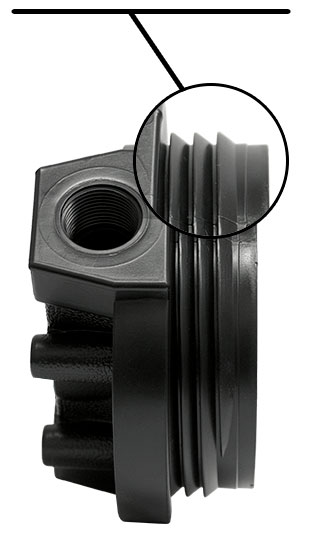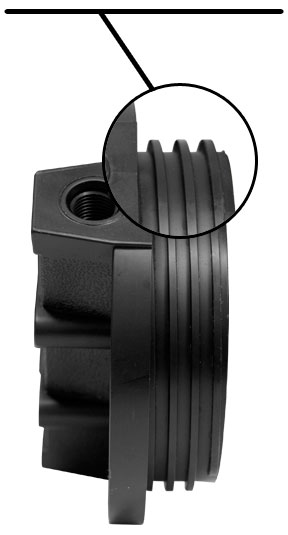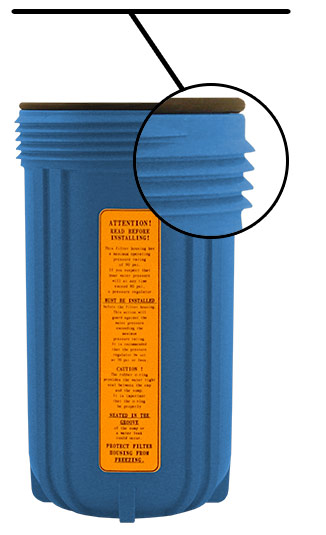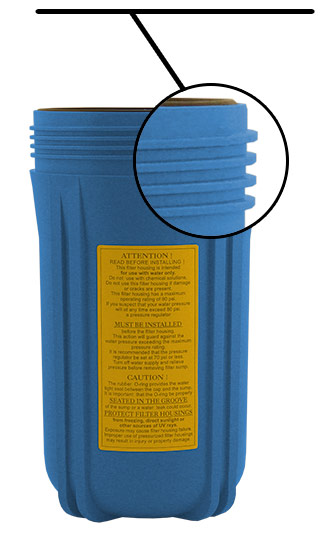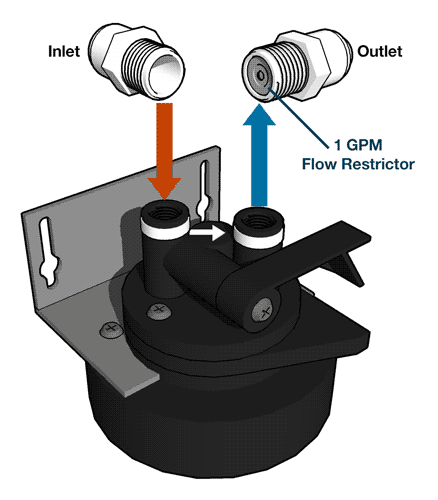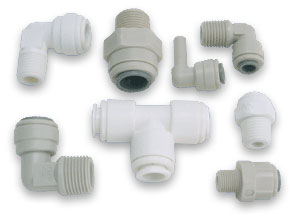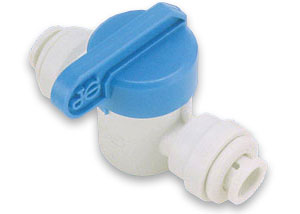What is Hydraulic Fracturing?
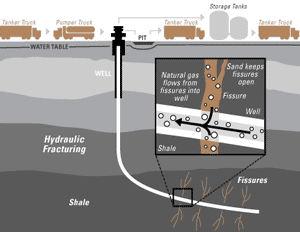 Hydraulic fracturing (sometimes referred to as fracking or hydrofracking) is a relatively new form of natural gas extraction where a well is drilled and then highly pressurized fluid is injected into the well which then opens fractures in the rock formations deep below, releasing natural gas from reservoirs which would have otherwise remained trapped or released slowly through natural hydraulic fracturing or more traditional forms of gas drilling.
Hydraulic fracturing (sometimes referred to as fracking or hydrofracking) is a relatively new form of natural gas extraction where a well is drilled and then highly pressurized fluid is injected into the well which then opens fractures in the rock formations deep below, releasing natural gas from reservoirs which would have otherwise remained trapped or released slowly through natural hydraulic fracturing or more traditional forms of gas drilling.
Fracking has received heavy criticism for producing large amounts of heavily contaminated water from the drilling process, contaminating ground and drinking water supplies with the litany of chemicals used in the drilling fluid and heavy metals & gases (in some extreme cases causing tap water to catch fire or private wells to explode), air pollution, and more recently has been linked to abnormal seismic activity.
Effects on the Envrionment
The fracking process requires a large quantity of water to drill. The fluids used in the fracking process flow back to the surface, often entering the water table or polluting the drilling area, and sometimes improper disposal of waste water from the wells. Fracking can also release gas and heavy metals into water supplies. Residents that live near fracking wells have reported foul smelling and in extreme cases flammable tap water.
Regulation
Source: WikipediaHydraulic fracturing for the purpose of oil, natural gas, and geothermal production was exempted under the Safe Drinking Water Act. The decision for this may be due in part to the fact that underground sources of oil and gas already contain high levels of hydrocarbons, including carcinogens like benzene. Hydraulic fracturing for these purposes therefore falls under state jurisdiction. State regulations are inconsistent. All other hydraulic fracturing falls under the EPA regulations as do the handling and disposal of recovered fluids.
Effects on Health
Chemicals make up only about 0.5% of the fracking fluids used, with the rest being fresh water. Some of these chemicals are in everyday household products and even food, posing little or no danger to health, while others are known hazardous carcinogens. Such chemicals like benzene (cancer, bone marrow failure), lead (brain disorders, damages nervous system), ehtylene glycol (antifreeze, lethal), methanol (highly toxic), boric acid (kidney damage, lethal) and 2-butoxyethanol (causes hemolysis).
What Can I Do To Protect My Water?
How you filter your water usually depends on what contaminants may be in your water. If you are worried about water quality for your entire family, a whole house water filter can purify all the water that comes into your house. Reverse osmosis water filters can remove 90% of dissolved solids in your drinking water, providing the purest water you can get in your home. Homeowners who use water from private wells should take extra caution and test their water regularly.
The best way to find out what you need to filter out is either buying a test kit from National Testing Laboratories or contacting a local university to do testing for you, a service they will usually do for free.Sources of Information on Hydraulic Fracturing
- EPA – Hydraulic Fracturing
- Wikipedia – Hydraulic Fracturing
- 3D Animation of Fracking Process
- FracFocus – Find info on a well near you
The foregoing information was compiled from the ‘Sources of Information’ links above.

